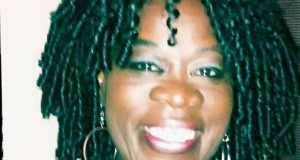By Jennifer Queen, Resource Fellow, Recreation and Tourism
It has been said that Black history is simply the missing pages of world history. Nothing could be truer. The Triple Nickles African American paratrooper unit left their mark, not only in Black history but, ultimately, in the history of the Army, the Forest Service and our great country.
On Feb. 29, the Triple Nickles will be awarded the Buffalo Soldiers Medal of Valor. The medal was created in Louisville, Kentucky, in 2014 by John Taylor Jr., a veteran and Buffalo Soldiers camp director. It was created to honor African Americans, living and deceased. The medal is presented and housed annually in Washington, D.C., at the African American Civil War Museum.
The 555th Parachute Infantry Battalion was a pioneering paratrooper unit of the United States Army. Instated in 1943 during World War II, the unit was given the unprecedented and undeniably dangerous job of jumping into forests that were set on fire by the nation’s enemy at war. The unit was nicknamed the Triple Nickles because of its numerical designation and because 17 of the original 20-member “colored test platoon” came from the 92nd Infantry Division, or Buffalo Division. Hence, the nickname Buffalo Nickles, symbolized by three buffalo nickels joined in a triangle. The unit’s 75-year legacy intersects with USDA Forest Service history in a very special way.
At a time when the Army traditionally relegated Black service members to menial jobs, the Triple Nickles succeeded in becoming the nation’s first Black parachute infantry test platoon, company and battalion.
Major James C. Queen—my grandfather—dedicated his life to fighting forest fires as a 555 paratrooper during the war. While serving, he was stationed at Fort Bragg, Fort Benning and other bases, where he underwent extensive training despite the many forms of discrimination that often hindered Black soldiers from advancing through the ranks. Despite the roadblocks, in 1994 Queen went on to become the first African American inductee into the Ranger Hall of Fame for his leadership during the Korean War.
A Washington, D.C., native, and the son of a secretary and a factory worker, Queen entered the army at the age of 18 with only a high school education. Nicknamed “Big Jim” for his towering 6’5″ height, he enrolled in the Reserve Officers’ Training Corps, where he earned the rank of junior colonel for Washington, D.C., by the time he graduated high school.
After retiring from the army in 1964, Queen went on to become assistant principal of H.D. Woodson High School in Washington, D.C., and later began writing the history of the first Black airborne company to fight in Korea—the 2nd ranger infantry.
“War Department studies indicated that they didn’t believe Black troops could become paratroopers, Queen said. “Just like they didn’t believe Black soldiers could become airmen…they just didn’t think we could do it.”
My grandfather lived a life colored with dignity, perseverance, love and determination in service to family and country. His body now rests next to my grandmother, Phyllis Queen, in Arlington National Cemetery, where he was buried with full military honors. Major Queen, like innumerable other paratroopers of color, proudly served his country and carried out tremendously dangerous work without the full respect, resources and support given to other troops. Many of their contributions to American infrastructure are still yet to be fully told.
The Triple Nickles was a skilled mix of former university students, top-notch professional athletes and veteran non-commissioned officers. Unlike other divisions of the army, the Triple Nickles did not deploy overseas during World War II. Instead, in 1945, the unit was secretly assigned to a series of firefighting missions in the Pacific Northwest Region. This special assignment, called Operation Firefly, saw the Triple Nickles transferred to Pendleton, Oregon. While there, the unit was trained by the Forest Service to become the first military smokejumpers in U.S. history.
That spring, the Triple Nickles parachuted into U.S. forests to battle wildfires that were set ablaze by incendiary balloons the Japanese were delivering across the Pacific Ocean. The Triple Nickles went on to operate in all the northwestern states. When the battalion was finally deactivated in 1947, their impact was undeniable.
That impact is recognized in the Forest Service Headquarters in Washington, D.C., with a conference room in their name located in the building’s promenade. Photos and descriptions of the men from the first iteration of the company adorn the walls. One paratrooper, the late Richard Williams, whose photo also hangs in the conference room, will be honored this year with a post office named after him in Columbus, Georgia. The commemoration is scheduled for March 18.
Resources:
Smokejumpers: 80 Years of Wildland Firefighting
The US Army’s First, Last and only all Black Rangers by Edward L. Posey
The Ranger Hall of Fame— http://www.nationalrgrassociation.com/ranger-hall-of-fame-1/
To learn more about the history of the Triple Nickles: http://triplenickle.com/history.htm
More about the legendary capture of hill 581: When Men Don’t Panic
 Westside Story Newspaper – Online The News of The Empire – Sharing the Quest for Excellence
Westside Story Newspaper – Online The News of The Empire – Sharing the Quest for Excellence




